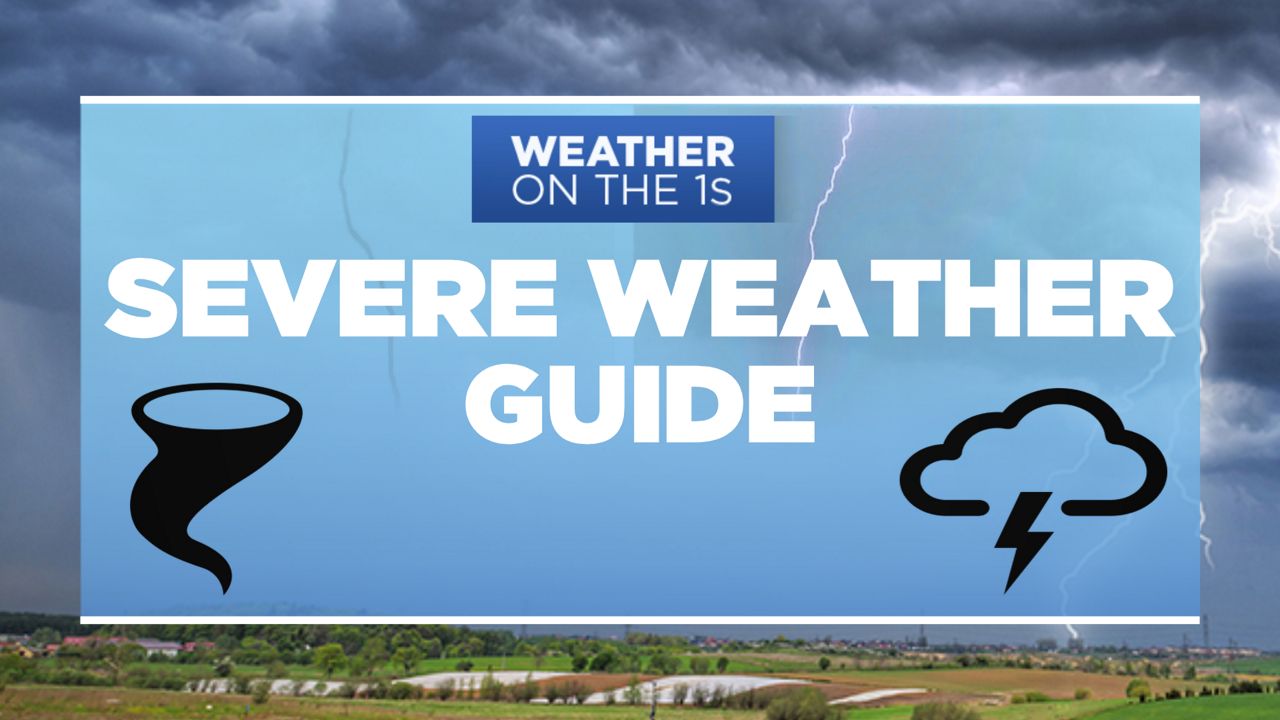Thanks for checking out our Severe Weather Guide! Hopefully you can find some useful tips and information as we get set for another Spring severe weather season in Wisconsin.
As always, for the latest and most up-to-date weather information you can watch our Weather On The 1s forecasts every 10 minutes on Spectrum News 1.
SEVERE WEATHER OVERVIEW
Our weather can literally change in a flash between March and June. Snow storms and cold temperatures can give way to intense thunderstorms and highs in the 70s. We've already seen it this season!
Then, all it takes is a fast-moving storm system and you could find yourself in the path of dangerous severe weather.
With that in mind, the following information is here to help you plan, prepare and make it through the Spring weather season. Bookmark this page, save the images to your phone, and share this guide with others!
WHAT IS A "SEVERE" STORM?
Did you know that a storm has to meet certain criteria for it to be considered severe?
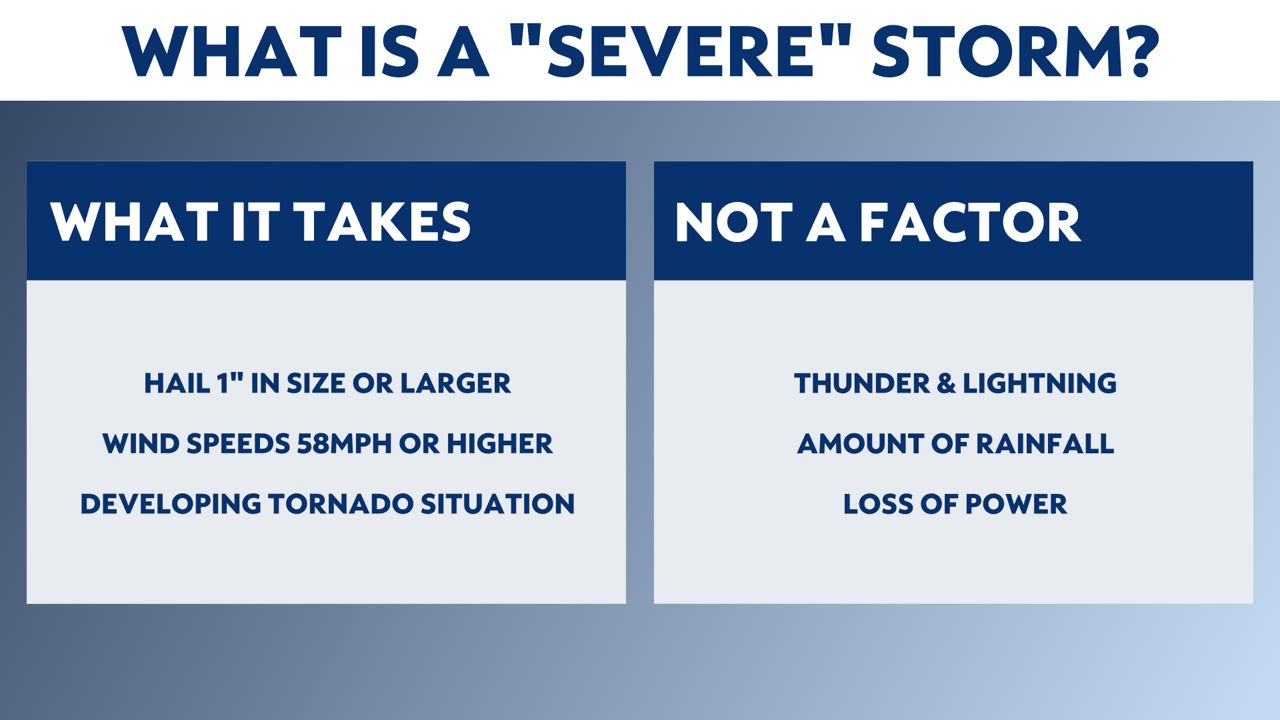
Notice that thunder and lightning are not factors. Plus, losing power does not make a storm severe. So when we talk about "severe" weather, we are expecting storms that produce hail, high wind gusts, or the potential for tornadoes.
SPRING WEATHER ALERTS
During times of severe weather, the National Weather Service (NWS) will issue various alerts in order to keep you safe. It is our job to pass along these alerts.
However, some of the alerts and terms can be misunderstood at times. So what does each one mean? Below is a helpful list. A key point to remember: the NWS issues these alerts by county; so it's very important to know what county you live in.
Before we go into the details, let's talk about something that confuses many people: the difference between a "Watch" and a "Warning":

SEVERE THUNDERSTORM WATCH - Means: Severe weather has the potential to occur. You should *watch out* for bad weather to happen. Watches are typically issued before any thunderstorms develop, and are issued for a longer period of time (6-8 hours on average).
While a Watch does not mean bad weather will happen for sure, it means the conditions could rapidly change and the atmosphere is primed for severe weather. This could mean things like hail, straight-line wind gusts and even flooding.
SEVERE THUNDERSTORM WARNING - Means: This is your call to action, to do something. Severe weather has been spotted or about to happen and it could impact you directly. Warnings cover a smaller geographic area and are usually only issued for small chunks of time (on average, 20-30 minutes).
FLASH FLOOD WATCH - Conditions are favorable for flash flooding to occur if/when heavy rain moves through your area.
FLASH FLOOD WARNING - Flooding is happening or about to happen in your area. Remember that flooding is the #1 severe weather-related killer (more than tornadoes). Six inches of water can sweep away an adult, two feet can move a large SUV.
TORNADO WATCH - Typically issued well before any severe weather develops. Again, the Watch means to *watch out* for thunderstorms that may produce tornadoes. These are issued for long periods of time (6-8 hours on average) and cover larger geographic areas.
TORNADO WARNING - You need to seek shelter. A tornado has been spotted in your area or has been indicated on high-resolution, Doppler radar. Warnings cover a smaller geographic area and typically last for 20-30 minutes. Remain in your tornado shelter until an all-clear has been given.
Okay, with *all* of that said... here is a quick & easy way to remember the difference between a watch and a warning:
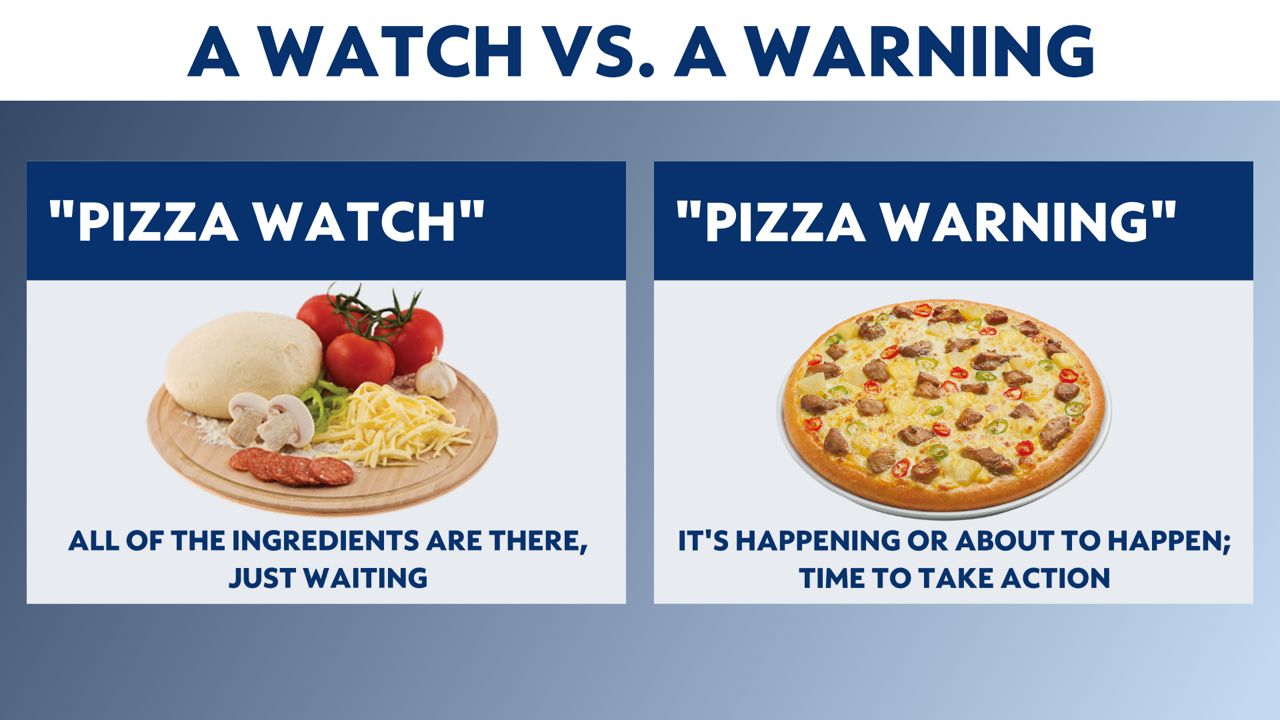
Now that you know the terms and know the types of alerts that can be issued, let's talk about what you can do to make sure you're prepared.
WHEN AT HOME
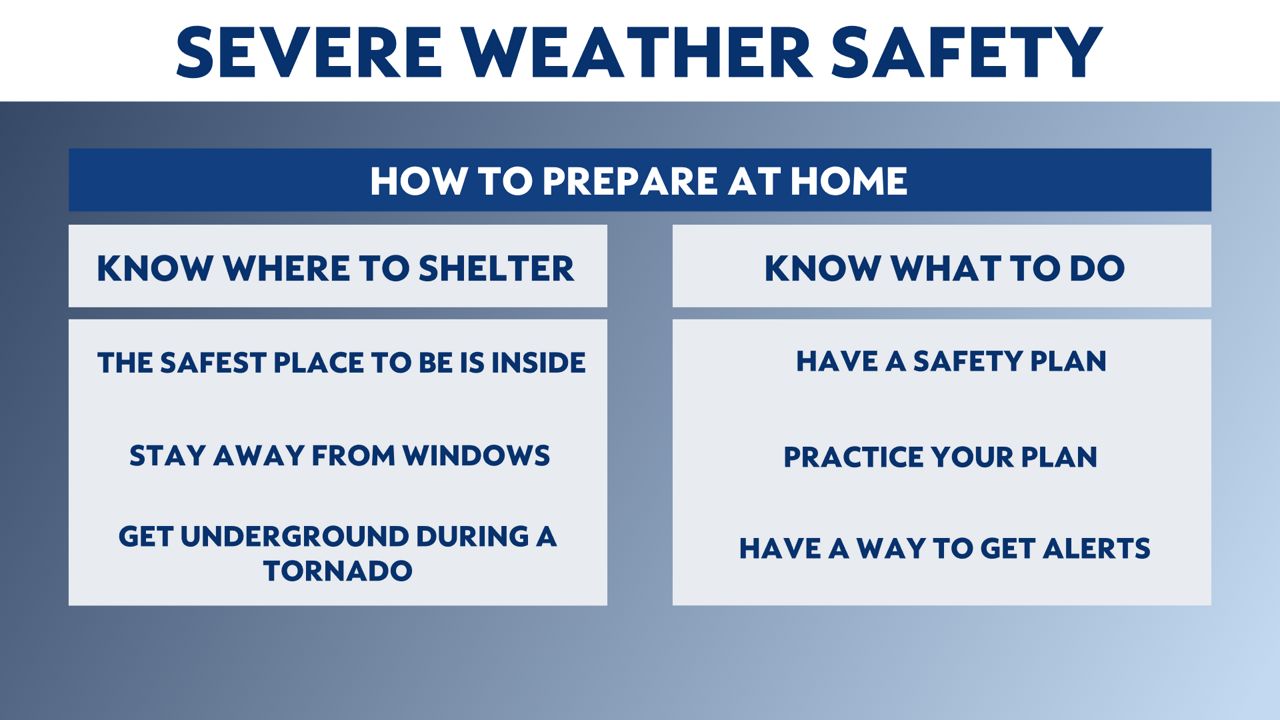
WHAT ABOUT WHEN YOU ARE AT WORK
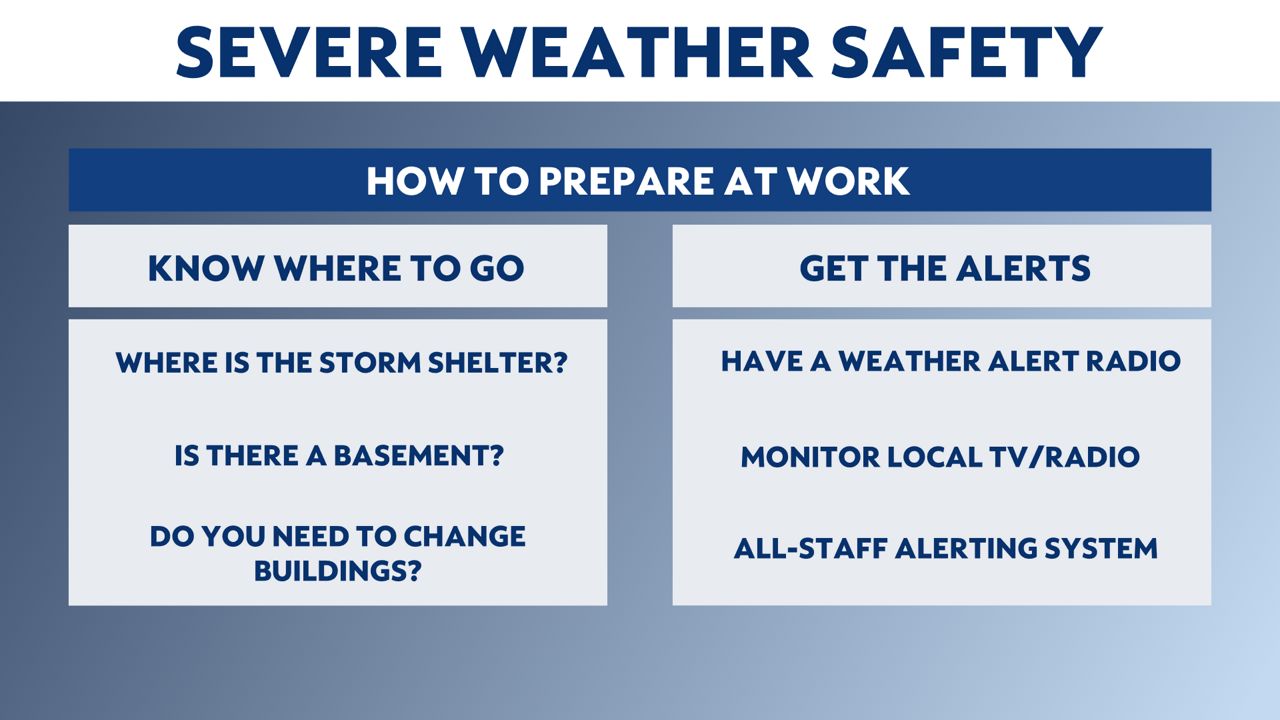
AND IF YOU HAPPEN TO BE OUTSIDE

A key point that needs to be stressed: you should *NOT* rely on outdoor warning sirens to alert you while you are INSIDE. The point of those sirens is to get the attention of those already outside. The absolute best way to be notified of severe weather is with a NOAA Weather Alert Radio. These can be purchased at most drug stores and retails chains for under $30. They go off the moment a warning is issued and can be setup strictly for your geographic area.
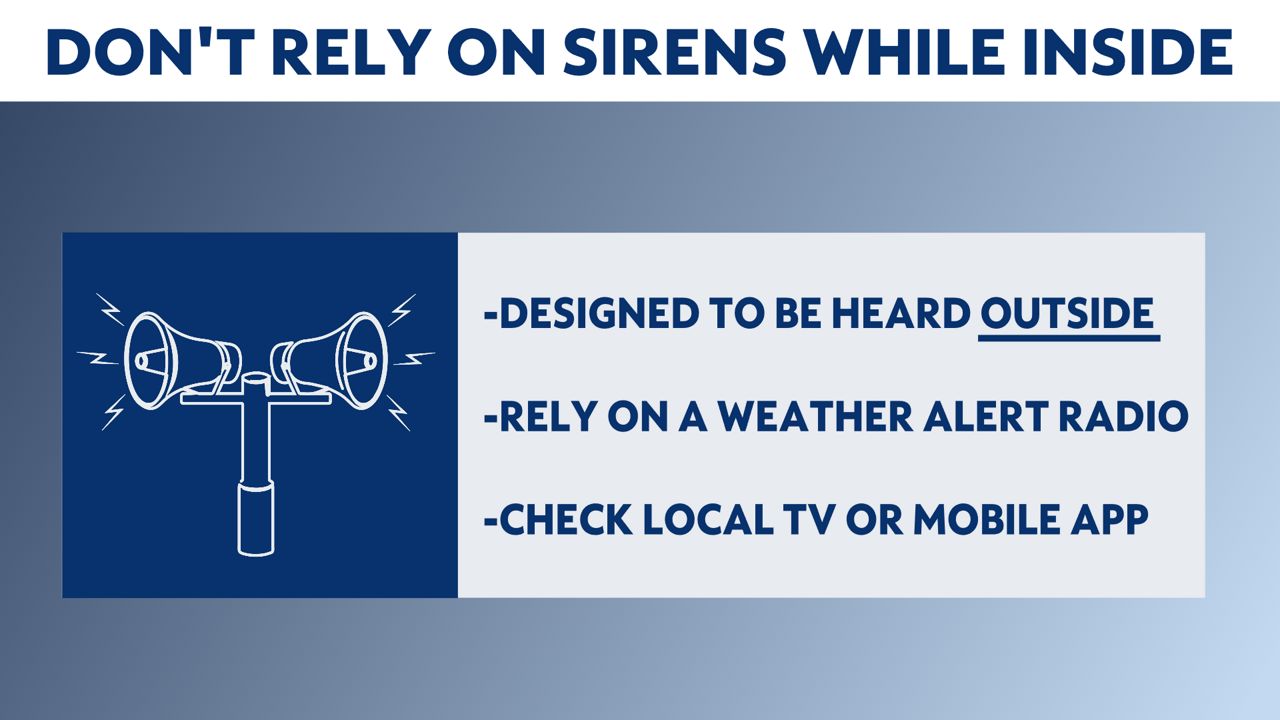
TORNADOES
Some of the most frightening and damaging weather comes from thunderstorms that produce tornadoes. In Wisconsin, our peak tornado seasons falls in May to June.
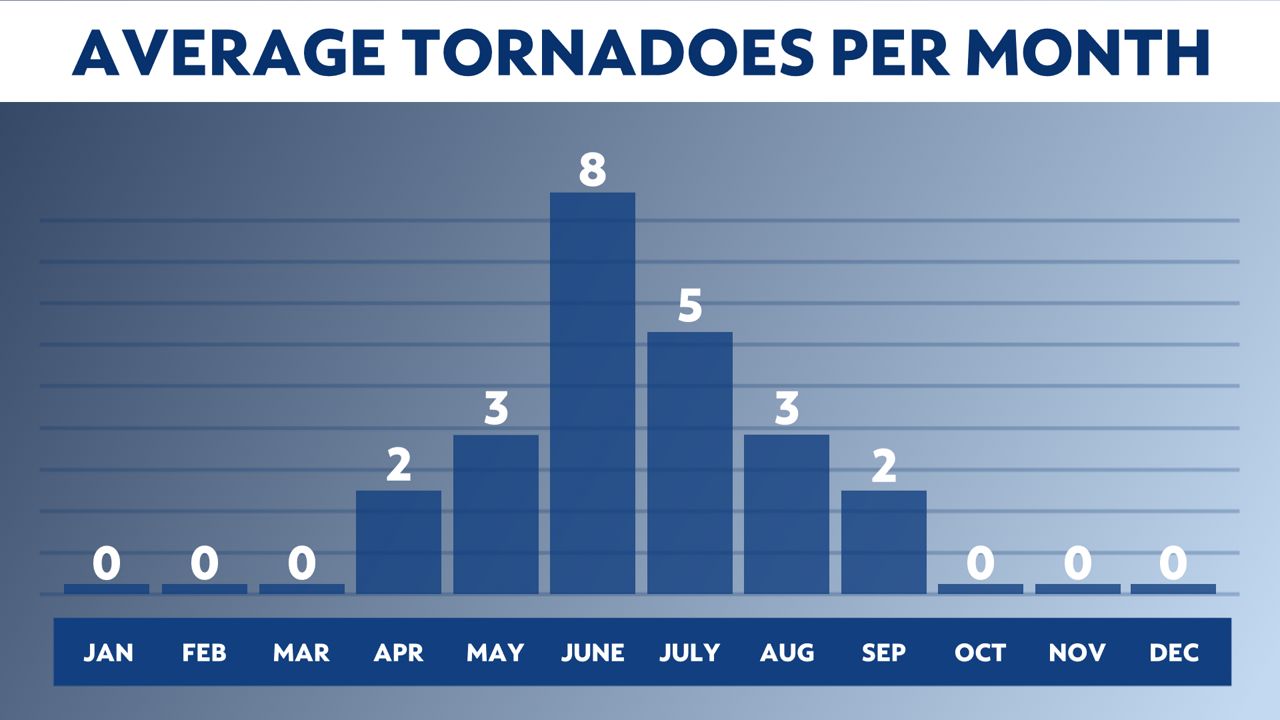
With this in mind, you must be prepared and know what to do if/when a tornado warning is issued for your area.
KEY REMINDERS FOR TORNADO SAFETY
When it comes to seeking shelter, don't wait until it's too late. You should heed all warnings when they are issued. When a warning is issued, don't expect to always see a tornado first. Sometimes they can be wrapped in rain and by the time you do see it with your eyes, it's too late. Other times, what may appear to be a "small" tornado can actually do major damage. Treat all tornado warnings seriously and never risk your life for the sake of a photo or video.
WHERE SHOULD I GO?
When it comes to sheltering during a tornado, underground is the safest place to be. Typically, this is in a basement. If you do not have a basement, you'll want to go to the center part of your home. Try to put as many walls between you and the outside as you can. In most cases, this will be in a bathroom or closet toward the center of your home and on the lowest level. If you live in an apartment that is not on ground level, get to the lowest floor that you possibly can!
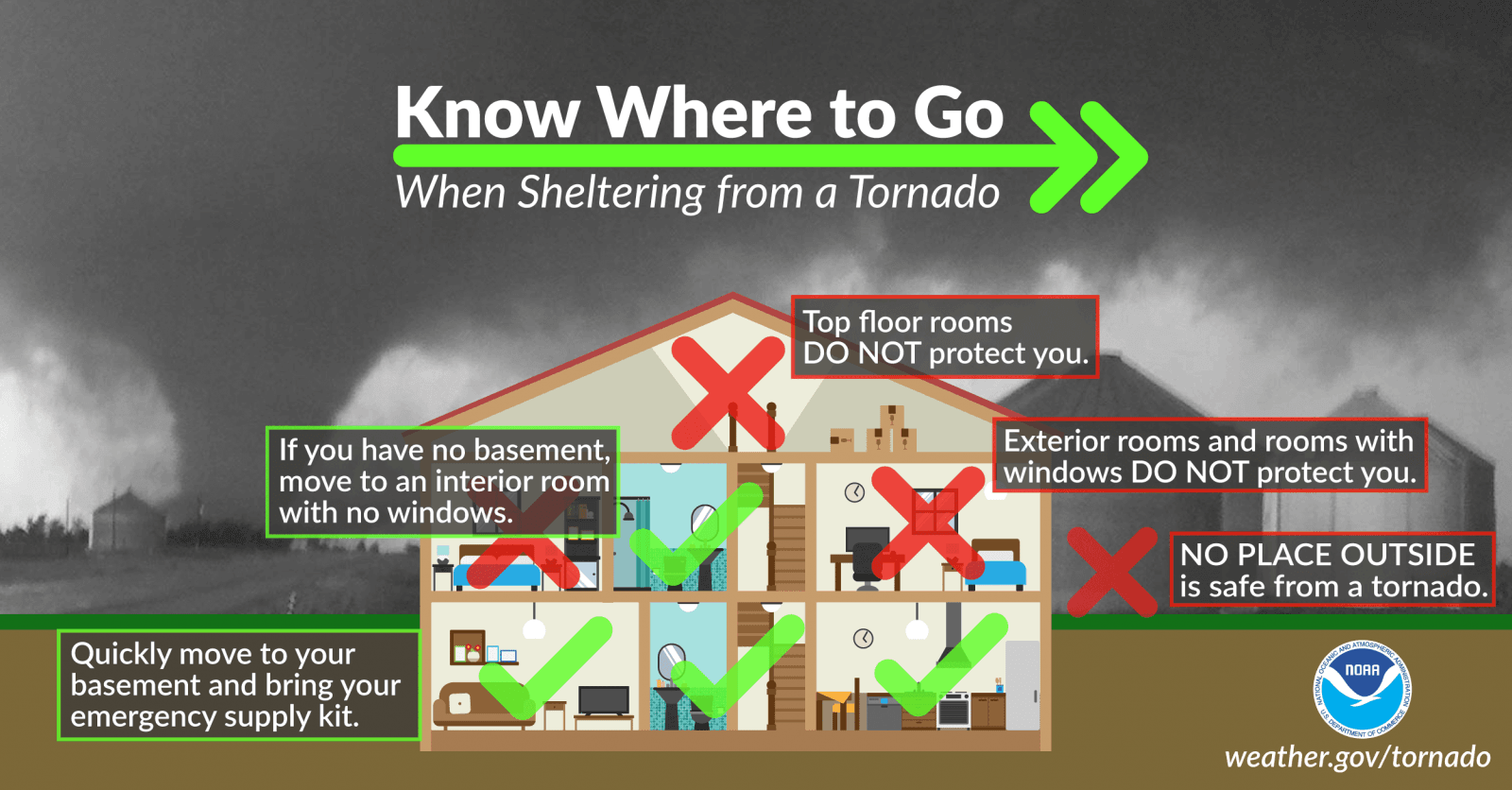
CHARGE YOUR PHONE/TABLET
Keeping a fully charged phone or tablet can help you watch live coverage of severe weather events from your shelter. Keep in mind, if you lose power, you may still be able to watch coverage via your data plan (since WiFi service will be knocked out).
ITEMS TO KEEP IN YOUR STORM SHELTER
It's a good idea to keep basic survival items in your shelter. This includes things like bottled water, granola bars, flashlights, candles, matches, and blankets. It's also good practice to have an extra pair of shoes in your shelter. Many people suffer injuries *after* a storm has passed because they walk barefoot on nails/glass/wood and other storm debris.
FINAL THOUGHTS
We hope this guide helps you even just a little bit this Spring. When severe weather arrives, it's easy to become scared and worried about what to do. Keeping this guide handy could help you through those moments this Spring. Remember to stick with Spectrum News 1 and our weather team as we keep you safe, informed, and prepared this severe weather season.
Questions?
JD Rudd can be reached at jd.rudd[at[charter.com
or find him on Twitter (@jdrudd) & on Facebook (fb.com/jdruddwx)





